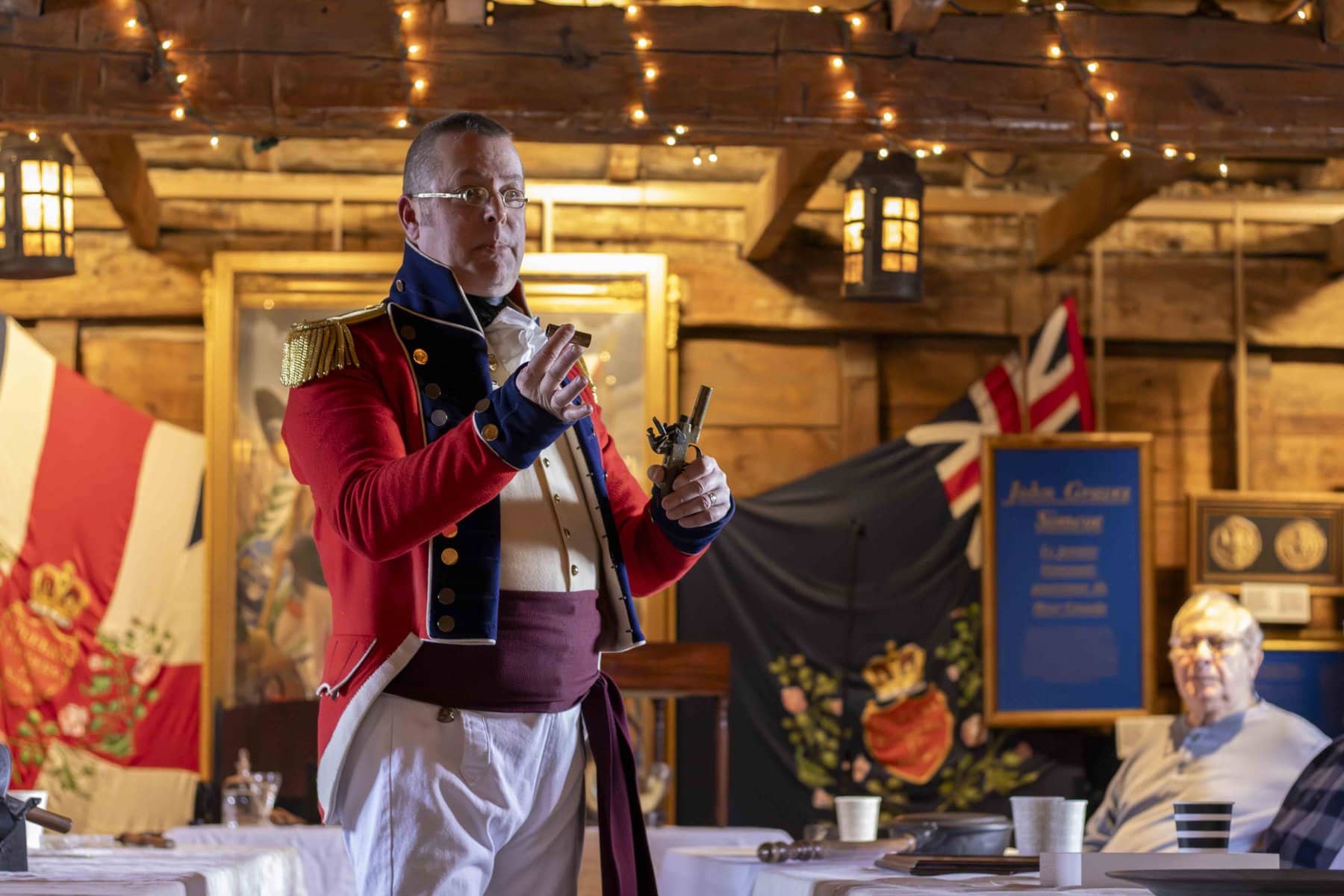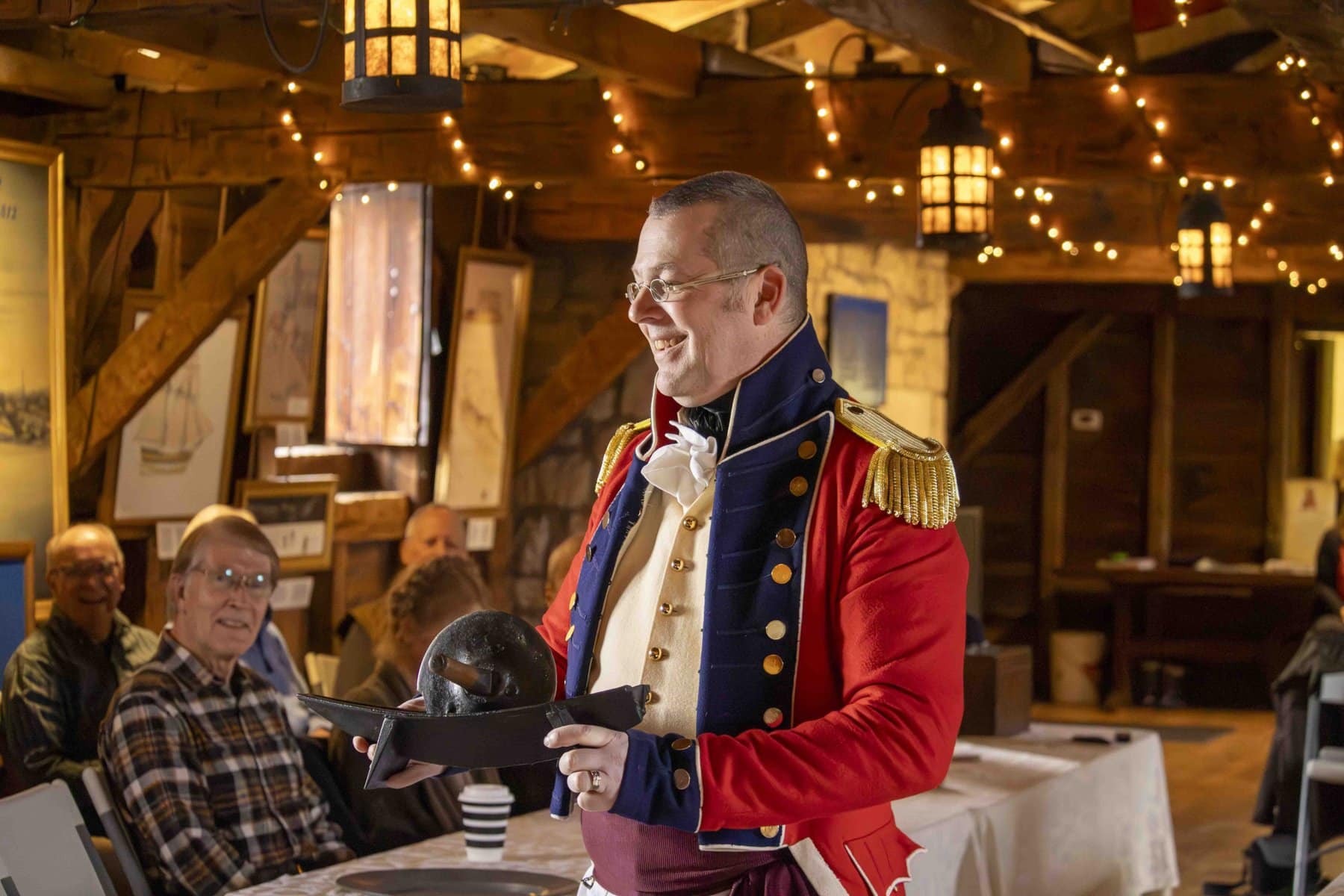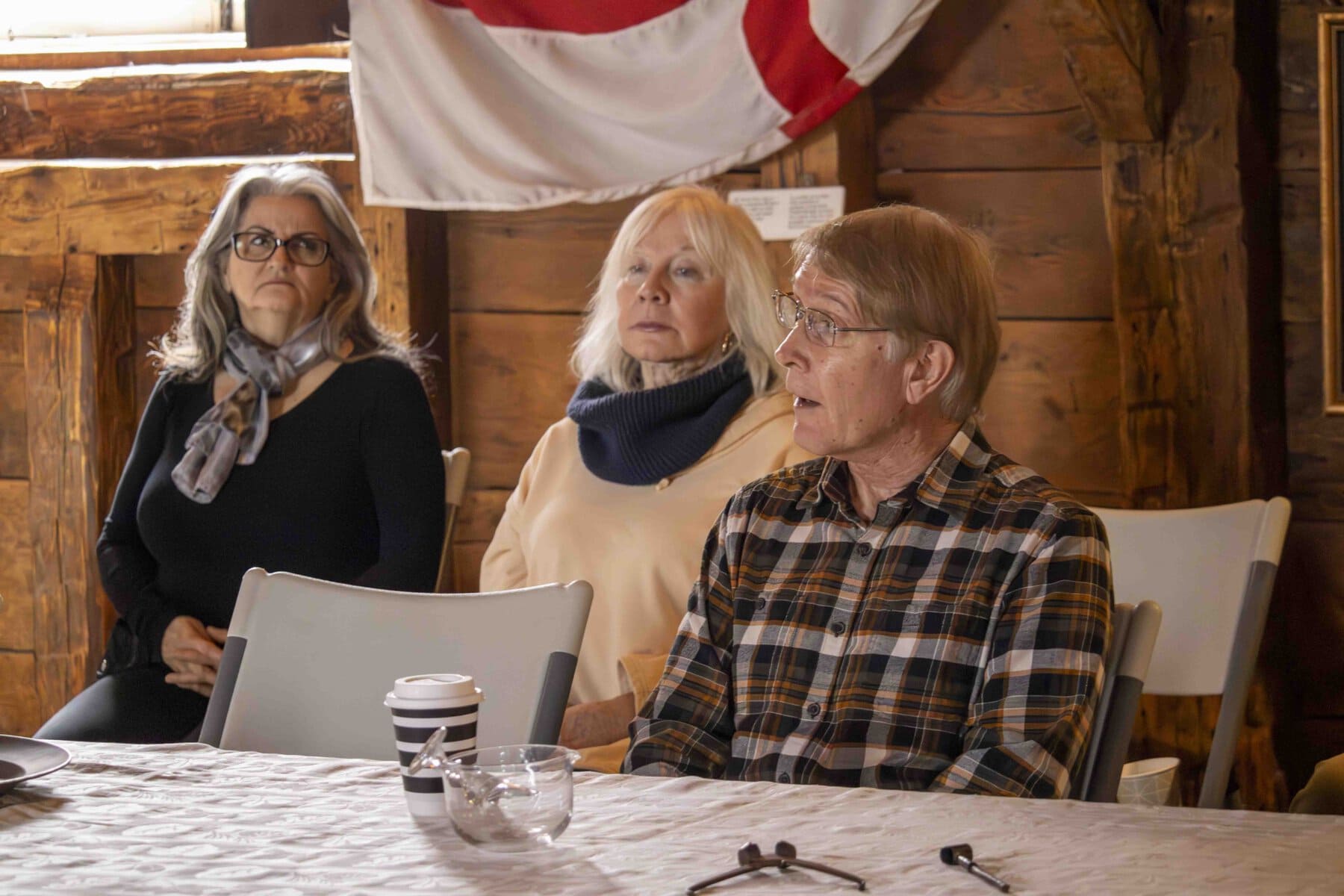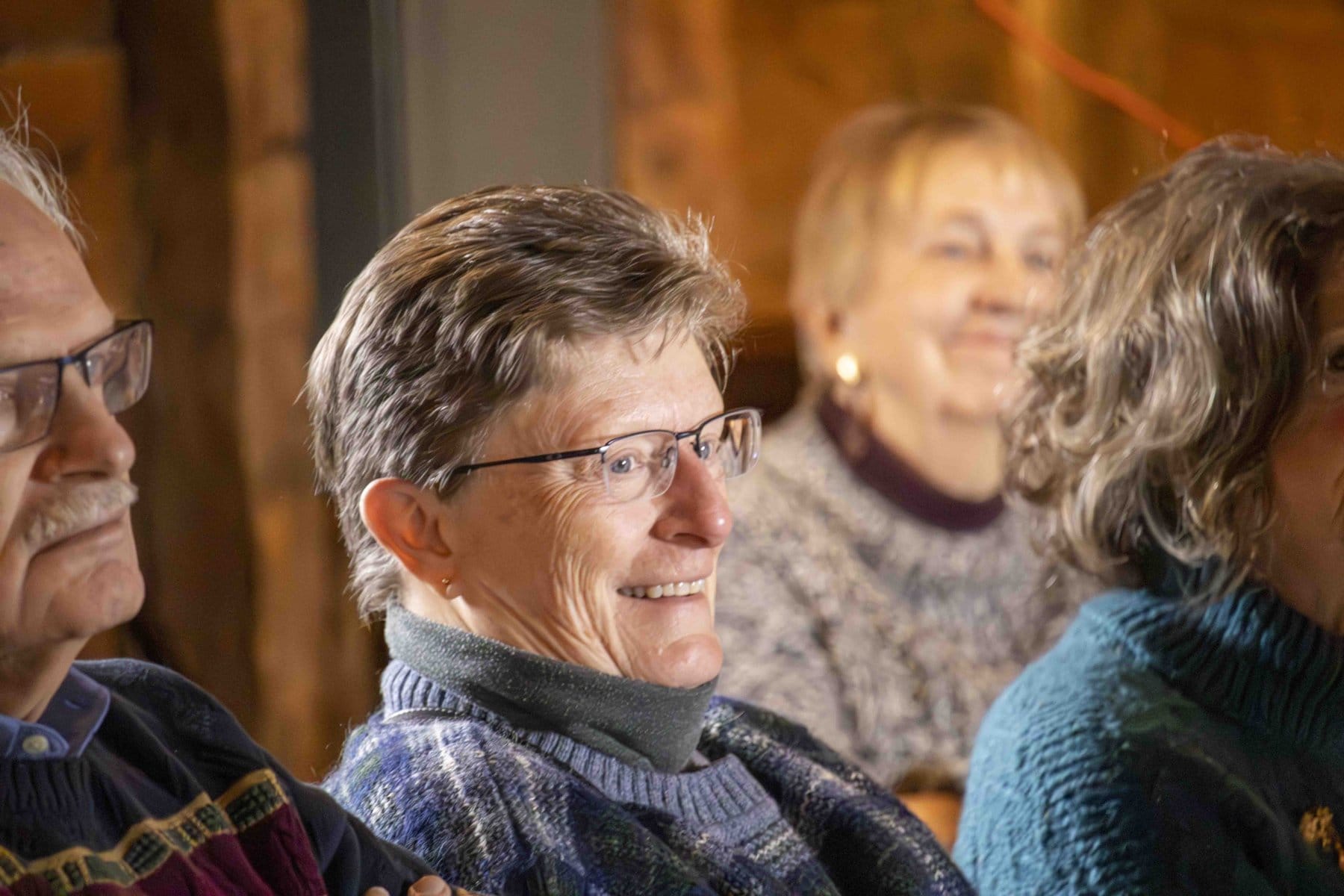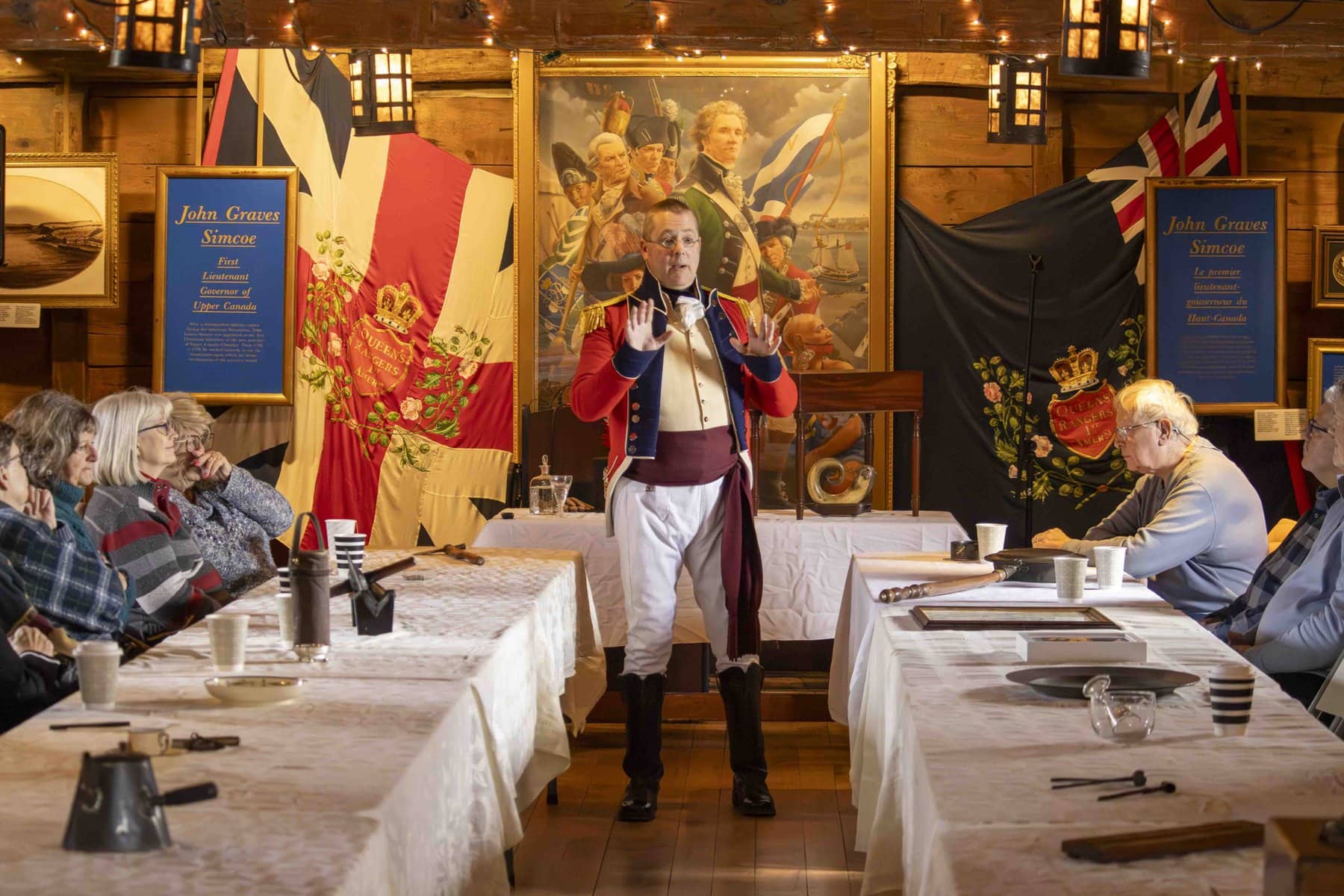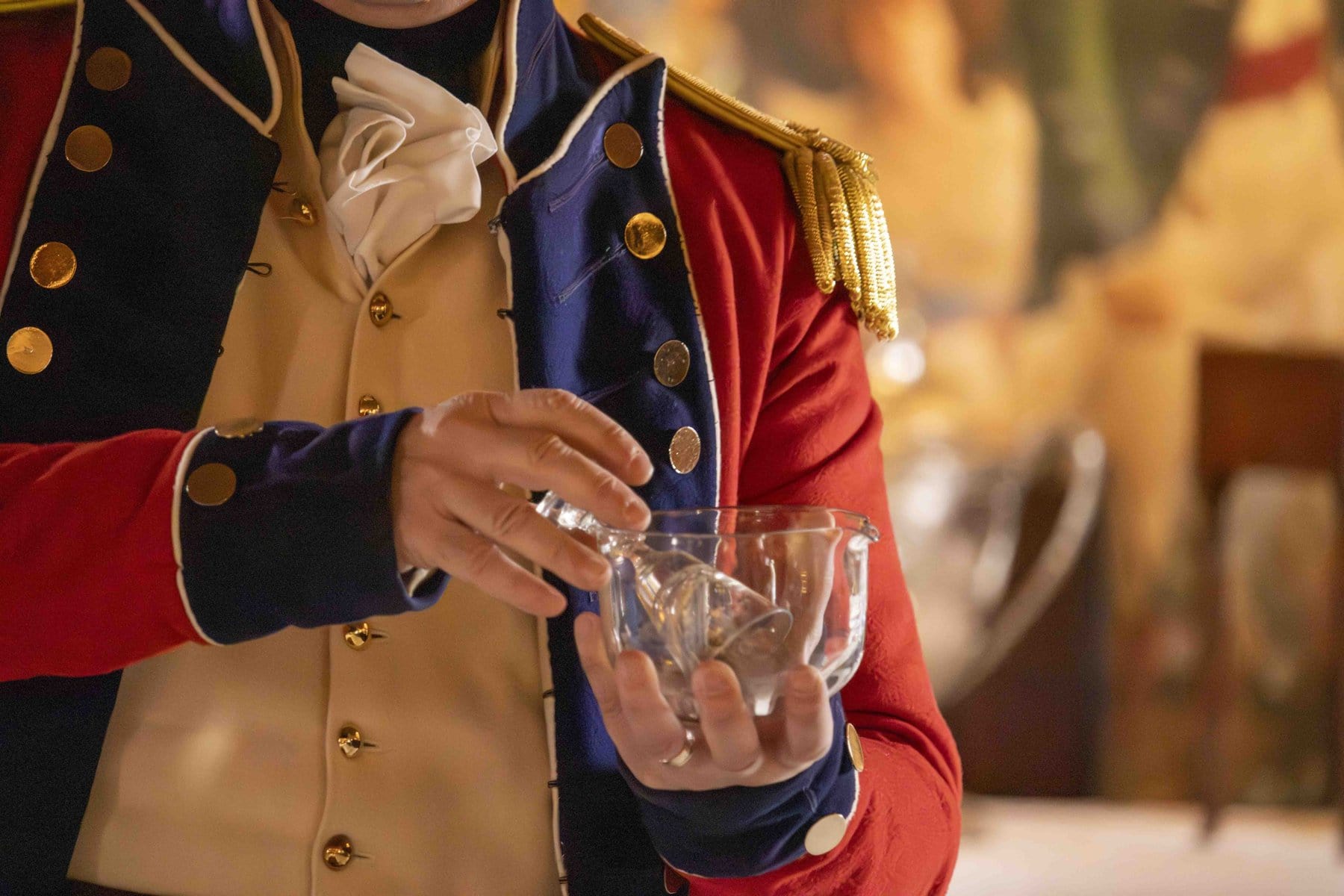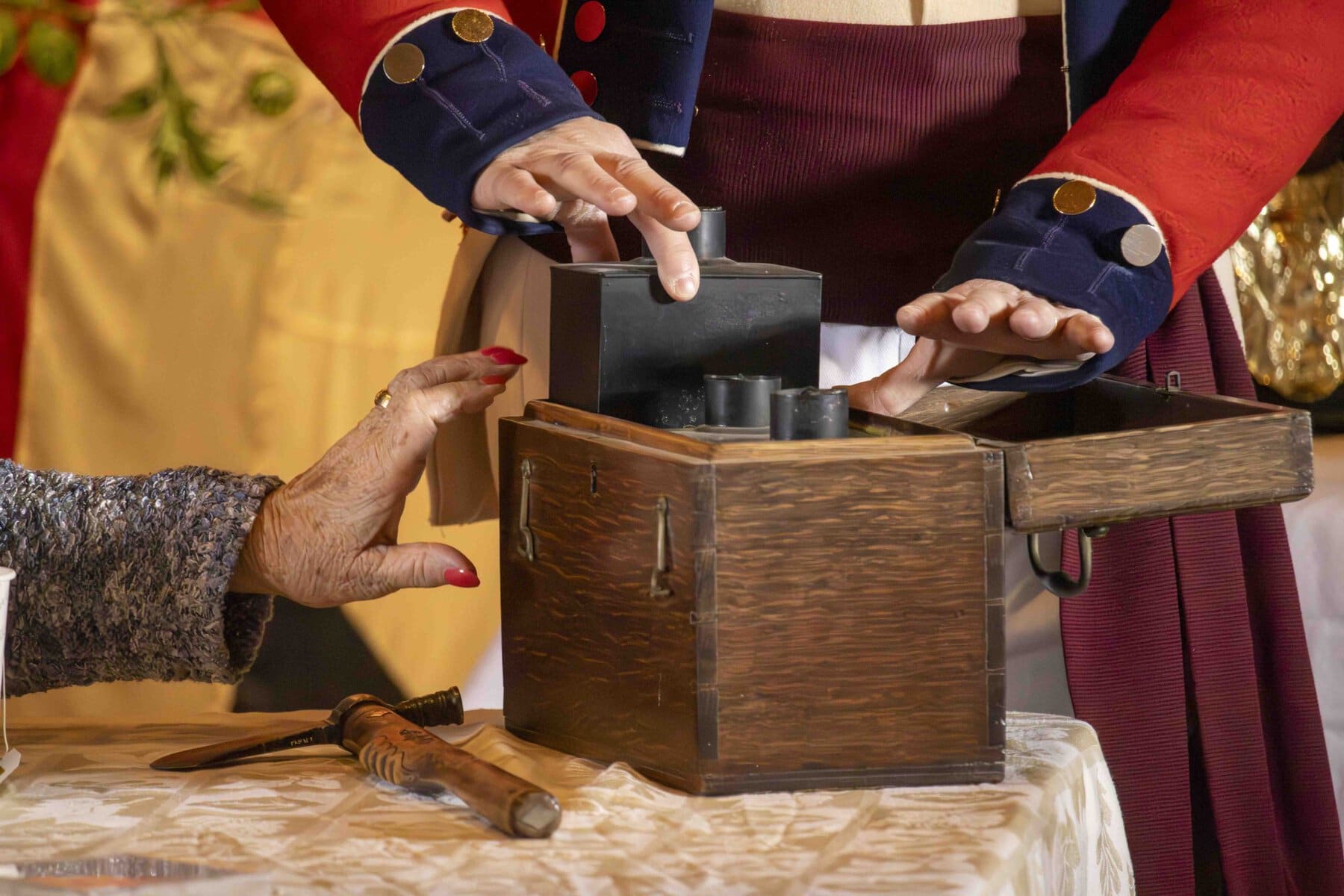The Navy Hall was a veritable dragon’s hoard of historical treasure Friday morning.
Site supervisor Dan Laroche shared 27 historical artifacts with almost 30 visitors who attended the latest in a series of fireside chats hosted by the Friends of Fort George and Niagara Parks.
Laroche, presenting the artifacts one by one, was dressed in the attire of Fort Maj. Donald Campbell, who died of natural causes in 1812.
Among the highlights were a map, a portrait, a pistol and a box of bullets.
The map showed the layout of Fort George as it was in 1804.
Laroche noted the fort was built in stages, starting in 1796. “It wasn’t really until about 1804 that it looks like it does today.”
The map was the most historically significant item he presented because it shows the fort as it was during the war.
But a close second was a portrait of Edward Cotton, a major who died an “absolutely horrific” death after being shot in the battle of Fort George.
“Poor chap took about five months to die,” Laroche said. “From a heritage value perspective, that is a pretty big deal for us.”
After the talk, Laroche said the feeling of holding Cotton’s portrait, knowing he had died at the fort, was like touching gold.
The picture of the dead soldier was displayed on a table covered in white cloth, along with the rest of the historical menagerie.
A double-barrelled pistol designed to be more accurate than standard issue sidearms was one of the rarer items at the table.
A former maintenance supervisor with Parks Canada found the unique firearm under a tree root atop Queentson Heights at least 30 years ago, Laroche said.
He could not confirm that the gun was actually used in the battle, saying it was an extremely uncommon model.
He told The Lake Report its owner would have spent a pretty penny just to own it.
As far as boxes go, the wooden one Laroche displayed was far from garden variety.
It was an early 18th-century gunpowder box with three tin containers on the inside for storing different types of powder.
But the British army did not expect soldiers to worry about multiple powders, so the box more presumably belonged to a hunter – who were more likely to need multiple powders.
Under Maj.–Gen. Sir Isaac Brock, soldiers were encouraged to pick up hunting as a way to ward off boredom and keep them out of the pubs of Niagara, Laroche said.
The double threat posed by “booze and boredom” to the discipline of soldiers remains a challenge for modern military officers, Laroche said, recalling a conversation he had with a sergeant in the Canadian Armed Forces.
Instruments of war were not the only ones on display.
Laroche had several old kitchen gadgets and serving dishes on display, too.
One was a black spice boat, used to cut and grind spices for consumption.
He also shared a copper “half kettle” that could have been used to pour hot chocolate.
And adjacent to that, he had a little cup and saucer, used to serve hot chocolate.
The beverage was popular in its day, but “quite bitter” Laroche said, and not like the sweetened beverages available at your local coffee shop.
The oldest item on display was a pewter serving platter, the origin of which Laroche dated to about 1740.
Though there were several residents in the crowd, like Lesley Stewart, who has “a general interest in anything old and historical,” there were a couple visitors at the table, too.
Ken Coker came all the way from Acton, an hour and a half away, to hear the talk.
“I drive down for these things, they’re that interesting,” said the 64-year-old.
Coker said he spent two summers working at Fort George in his teens and never lost his interest in the stronghold.
“Things could have gone very differently for the history of the country, had we failed here,” Coker said.
Laroche described his interest in the history of Fort George as an “occupational hazard.”
He took a summer job at the fort when he was still in high school and is still there 34 years later.
The last fireside chat takes place this Friday at 11 a.m at Navy Hall.
Tickets can be purchased from the Friends of Fort George Special Events webpage.



